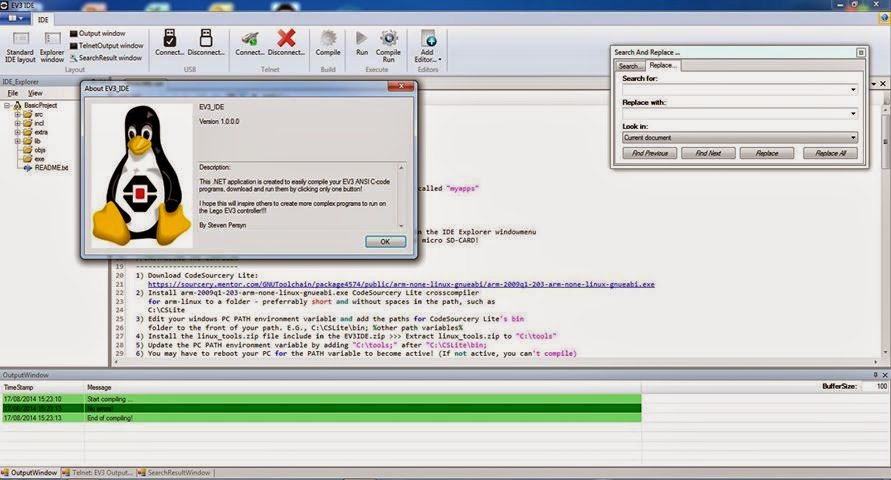Tribot Mindstorm Program Examples

Introductions The first two chapters are very introductory, and cover the bare basics of using the EV3 software and downloading programs. For anyone that has actually built their EV3 set and programmed any of the standard robots, these chapters are probably too simplistic. Still, they set the mood for the rest of the book with early recommendations on saving programs, commenting code, using context help etc. Building the TriBot In chapter 3 you build the TriBot which is used for testing out all programs in the rest of the book. The TriBot is a simple frame, used to mount the sensors.

Game Maker Blood Splatter Particles In A Solid. LEGO ® MINDSTORMS ® Education EV3 Sample Programs EV3 Coding. We encourage you to download the sample program that fit your needs and language. Users of the NXT 2.0 kit may also be able to build some of the Projects for NXT 1.X, click here for more information. Learn to build and program NXT 2.0.
Each sensor can be removed and placed elsewhere based on the requirements of the program being written. For example the IR receiver can be moved to the side to measure distance to the wall, or the color sensor mounted on the front for the line follower.
There are instructions for the TriBot for either the Home or Education editions. The IR/Ultrasonic sensors are interchangeable and take slightly different values depending where they are used. Can you see why this might not work? This book is great at teaching you why there can be inaccuracies in robotic movements and how to avoid them. As you progress through the book you will learn methods to use the sensors to actively adjust the robot's behaviour based on its surroundings.
Motors Chapters 4 and 5 provide information about how the motors and sensors work. It goes through each feature in detail and explains how each of the relevant blocks work. Even if this is all you read, it will provide you with a great understanding of how to build your own EV3 robots.
Chapter 7 introduces you to what I think is the most interesting program/robot in the book. Garo Special Byakuya No Majury. The Wall Follower program is a very simple program that uses the right-hand turn rule for solving a basic maze. For novice programmers, this chapter also introduces you to the concept of pseudo code and initial conditions to help write algorithms for solving more complicated problems.
It progresses through a few variations and methods of improving how well the robot works. Unfortunately I haven't had time to build a proper maze yet. It needs to be quite large to fit the robot, and I don't have quite enough LEGO to build it. This will make an excellent project during school holidays:) Data Driven Robots Chapters 8, 9 and 10 cover using the data wires to connect the inputs and outputs of blocks together, and the intricacies of using data wires with switch/loop blocks.
This starts to make possible the truly immersive robots that can react to their environment in smarter and more efficient ways. The first program uses the two TriBot wheels to control a musical tone. One wheel modifies the volume while the other modifies the frequency played. Free Download Ringtone Sms Upin Dan Ipin. It is a very simple demonstration of how the data wires work.
The Light Pointer Robot Advanced Topics Up until now, I would consider the content fairly simple and most people would pick it up from playing around with the bundled Mindstorms robots. The remaining chapters cover more advanced topics that need further experimentation to figure out.
Chapter 12 covers the My Blocks feature to create custom blocks of programs that can be reused in multiple places to simplify the logic. It does a good job at explaining and taking you through creating your own blocks and how to define its inputs and outputs, by modifying programs written earlier in the book. Chapter 13 covers the Math Block's advanced mode, which isn't really that advanced but it does a good job at explaining the errors that might occur. Where it does start to get interesting is in modifying the earlier Line Follower robot to use more advanced maths in the form of a Proportional Controller to get smoother movements.
It then covers the more-or-less related blocks: Timer, Round, Random, Logic and Range. Chapter 16 is about reading/write to files on the brick. These files are persistent across restarts and can be quite useful for a number of things.